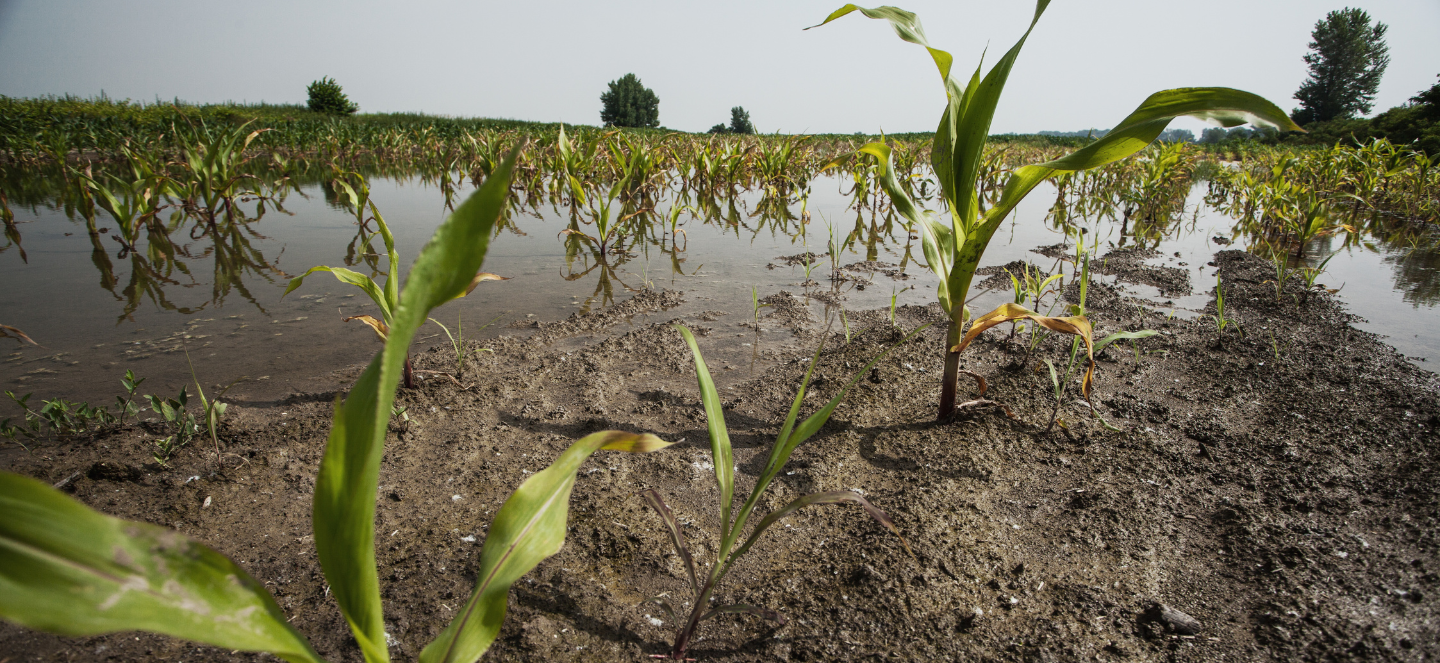
Spartans Making A Difference: Designing for the Future — Smarter Drainage, Cleaner Water
Included in the August 7, 2025, biweekly update
This week’s articles by MSU faculty, specialists, and students making a difference feature climate-smart drainage design, wastewater treatment to reduce antibiotic resistance, and PFAS in solar panels.
DRAINMOD predicted impact of climate change on hydrology, corn yield, and drainage design in the Western Lake Erie Basin, United States
Dialameh et al. (2025) use the DRAINMOD model to examine how future climate conditions may affect subsurface drainage, corn yield, and water management in southeastern Michigan. By comparing historical data (1994–2023) with projections for 2030 to 2059 under the SSP2–4.5 scenario, they identify key changes in water availability and crop performance.
The researchers predict higher temperatures and evapotranspiration, a 21% drop in drainage discharge, and a 7% deeper water table. These shifts are expected to increase drought stress and reduce corn yields by an average of 25%. To maintain productivity and economic return, Dialameh et al. recommend wider drain spacing, from 7 to 11 meters for shallow drains and from 12 to 21 meters for deep drains.
The researchers also emphasized the need for drainage designs that anticipate future climate impacts and rely less on past conditions. Their findings offer guidance for improving agricultural resilience in the Great Lakes region.
Dialameh, B., Ghane, E., & Youssef, M. (2025). “DRAINMOD predicted impact of climate change on hydrology, corn yield, and drainage design in the Western Lake Erie Basin, United States.” Agricultural Water Management, 318, 109641. https://doi.org/10.1016/j.agwat.2025.109641
Corresponding author: Ehsan Ghane, ghane@msu.edu.
An efficient strategy for BDD electrode drive electro-catalysis triggering active species on lincomycin and antibiotic resistance genes removal: Electron transfer based on calculation modeling
Wang et al. (2025) examine how boron-doped diamond (BDD) electrodes can remove lincomycin and antibiotic resistance genes (ARGs) from swine wastewater. Lincomycin, commonly used in livestock production, is often excreted in its original form and contributes to the spread of ARGs.
The researchers combine electrochemical testing with electron transfer modeling to identify how reactive species like hydroxyl radicals, singlet oxygen, and ozone degrade these pollutants.
Instead of trial-and-error methods, Wang et al. used density functional theory (DFT) to predict electron pathways and identify the best settings for treatment. Their system achieved more than 99% removal of lincomycin and over 95% reduction in ARGs for both synthetic and genuine wastewater samples.
The researchers frame this approach as a targeted method to reduce antimicrobial pollution from animal agriculture. Their work supports strategies for addressing environmental and public health concerns tied to antibiotic use in food systems.
Wang, J., Hu, Y., An, L., Wang, J., Wu, F., Gu, J., Wang, X., & Tiedje, J. M. (2025). “An efficient strategy for BDD electrode drive electro-catalysis triggering active species on lincomycin and antibiotic resistance genes removal: Electron transfer based on calculation modeling.” Science of the Total Environment, 918, 170385. https://www.sciencedirect.com/science/article/pii/S0304389425008295
Corresponding author: Xiaojuan Wang, xiaojuan7069@sina.com.
Per- and polyfluoroalkyl substances (PFAS) in solar photovoltaic modules
Nain and Anctil (2025) investigate the presence of PFAS, or long-lasting, harmful chemicals, in the materials used to make solar panels. They found that several types of PFAS are built into common components like the backsheet, encapsulant, and coatings. Because these chemicals don’t break down easily, they pose risks during manufacturing, regular use, and at the end of a panel’s life when it’s discarded or recycled.
The researchers highlight a major gap in data: there’s little public information on exactly which PFAS are used and how much is in each solar panel. This lack of transparency makes it hard to assess the full environmental cost of solar energy.
Nain and Anctil ask that solar panel manufacturers publicly share which PFAS chemicals they use and how much. They also recommend that environmental regulators create clearer rules to track and limit PFAS in solar products.
Nain, P., & Anctil, A. (2025). “Per- and polyfluoroalkyl substances (PFAS) in solar photovoltaic modules.” Renewable and Sustainable Energy Reviews, 186, 114222. https://doi.org/10.1016/j.rser.2025.115562
Corresponding author: Preeti Nain, nainp@ornl.gov.
